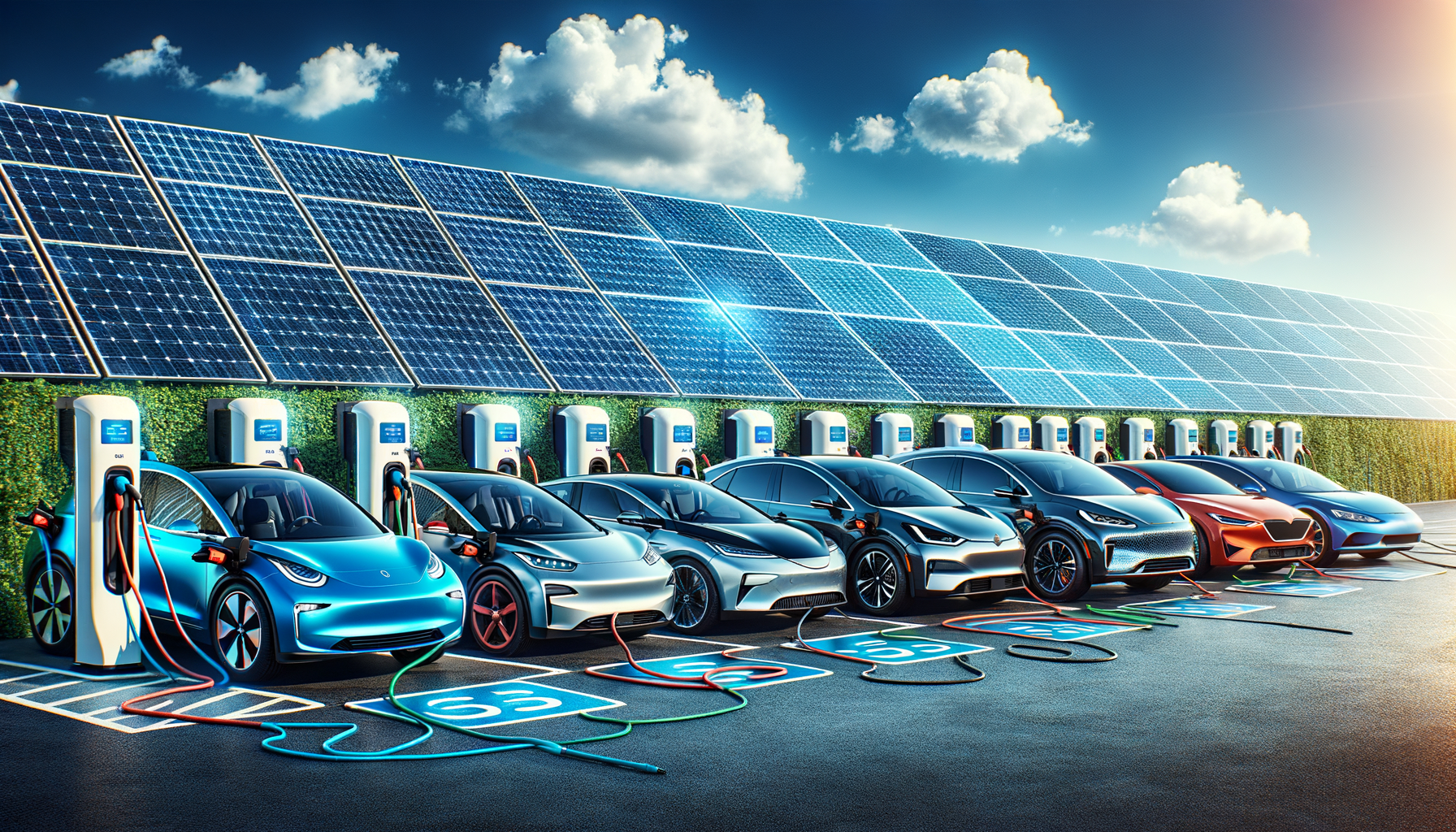Understanding the Different Types of Solar Panels for Your Home

Updated 4 months ago
Understanding the Different Types of Solar Panels for Your Home
In recent years, the demand for renewable energy has soared, making solar panel installations an increasingly popular choice for homeowners seeking sustainable energy solutions. Understanding the different types of solar panels is crucial for making the right investment that aligns with your energy needs, budget constraints, and sustainability goals. In this comprehensive guide, we will explore the intricacies of three core solar panel types—monocrystalline, polycrystalline, and thin-film—and their respective advantages and drawbacks.
Monocrystalline Solar Panels: High Efficiency in a Sleek Package
Monocrystalline solar panels, known for their sleek black appearance, are the epitome of solar efficiency and longevity. Crafted from a single, pure silicon crystal, these panels not only offer the highest efficiency ratings—often surpassing 20%—but also take up less space on your roof compared to other options. While they command a higher price tag due to the precision required in manufacturing, the return on investment can be convincing for those with limited spacing or wanting to maximize energy production.

The Science Behind Monocrystalline Panels
Constructed using the Czochralski method, these panels contain cells cut from a cylindrical silicon ingot. The cutting process forms the distinctive wafer-like appearance with characteristic rounded edges—a trait that distinguishes monocrystalline modules from their counterparts. This pure silicon structure not only enhances solar efficiency but also renders a neatly consistent coloration that many homeowners find appealing.
Polycrystalline Solar Panels: Cost-Effective and Robust
Polycrystalline solar panels, easily identified by their signature blue hue and square-shaped cells, provide a more affordable pathway to solar adoption. While they share a similar silicon foundation with monocrystalline panels, polycrystalline panels are manufactured by melting together multiple silicon fragments. This results in a lower production cost, which is passed on to the consumer. However, the trade-offs include a typically lower efficiency range of 15-17% and a more conspicuous presence on rooftops due to their distinct coloring and textural marbling.
Why Consider Polycrystalline Panels?
For those with ample roof space who prioritize initial cost savings over peak efficiency, polycrystalline panels present a feasible solution. They offer a middle ground in performance and are a testament to the evolution of solar technologies that can still capitalize on the sun's power effectively.
Thin-Film Solar Panels: Flexibility for Specific Applications
Advancements in solar technologies have birthed the thin-film solar panel—a category that embraces adaptability and versatility. Primarily utilized in large-scale industrial projects or unique applications like RVs and boats, thin-film panels can be manufactured from various materials, including cadmium telluride (CdTe) and amorphous silicon (a-Si). Although they sport a modern look with uniform black sheets that can blend seamlessly onto surfaces, their efficiency ratings typically span from 6-15%, depending on the material used.
One notable advantage of thin-film panels is their performance in high-temperature environments. Their lower heat sensitivity makes them suitable for hotter climates where they can outperform other panel types in energy yield stability.
Solar Panel Efficiency: A Comparative View
When discussing panel efficiency, it is important to understand that this determines the amount of sunlight converted into usable electricity. The higher the efficiency percentage, the more electricity is produced per square foot of the panel surface. Efficiency not only affects the amount of energy generated but also influences the overall system size and cost.
| Solar Panel Type | Efficiency | Power Capacity | Color |
|---|---|---|---|
| Monocrystalline | >20% | 300W and up | Black |
| Polycrystalline | 15-17% | 240-300W | Blue |
| Thin-Film | 6-15% | Varies | Black |
Cost Considerations: Investing Wisely in Solar
When evaluating the cost of solar panels, it's essential to look beyond the price per watt—a common benchmark in the industry. While monocrystalline panels often have a higher cost, their superior efficiency and longer lifespan can lead to significant savings over time. Polycrystalline panels offer a lower upfront investment but may require more panels to meet your energy needs, potentially leading to higher installation costs.
In the case of thin-film technology, the initial costs can be markedly lower, and this option is especially appealing when installation flexibility and panel weight are major considerations. Nevertheless, the larger area required for installation usually makes this type of panel impractical for residential rooftop applications.
Choosing the Right Solar Panel for Your Home
Before making a solar panel selection, consider key factors such as your available roof area, local climate conditions, and energy consumption habits. Engaging with a professional installer can provide a customized recommendation based on a thorough evaluation of your specific situation.
- Limited Roof Space: High-efficiency monocrystalline panels are the go-to option to maximize energy production in a compact area.
- Large Roof or Ground Area: You may opt for polycrystalline panels to benefit from the lower cost if spatial constraints are not an issue.
- Special Installations or Hot Climates: Thin-film panels offer unique advantages for unconventional installations or areas with high heat levels.
The Path Forward: Embracing Renewable Energy with Confidence
Transitioning to solar energy is a significant step towards a more sustainable future. By understanding the differences between solar panel types, you can make an informed decision that aligns with your long-term energy needs and financial considerations. As solar technologies continue to evolve, investing in a solar panel system not only contributes to a cleaner planet but also unlocks the potential for energy independence and economic savings.
Whether you're ready to make the switch or still weighing your options, leveraging online resources like cost calculators and speaking with local experts can provide valuable insights into the best solar solutions available. With the right information and guidance, your journey to harnessing the power of the sun can be a rewarding venture that pays dividends for years to come.
Engage with us for a personalized estimate and to learn more about the benefits of going solar. Explore your solar options by entering your zip code and receive tailored information that will light up your path to a sustainably powered home.
(Sources and further reading sections to cite references, additional details, and encourage exploration can be added here as per the company's information sharing policy and brand guidelines.)




